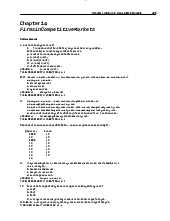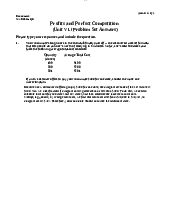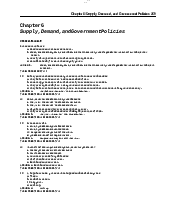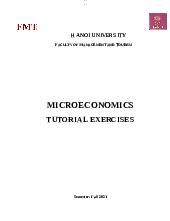



Preview text:
lOMoARcPSD|46342985 lOMoARcPSD|46342985
1. Considering the six key elements of organizational design
(work specialization, departmentalization, chain of command,
span of control, centralization/decentralization, and
formalization), recommend an organizational design that you
think is most suitable for TechFusion. Explain your reasons in
detail based on the six key elements of organizational design.
For TechFusion, a hybrid structure incorporating aspects of
both divisional and functional structures is likely the most
suitable. Here's an analysis based on the six key elements of organizational design:
1. Work Specialization: To ensure expertise, TechFusion
could retain high specialization within centralized
functions like R&D. This approach helps maintain
consistency in core technologies and capabilities across global divisions.
2. Departmentalization: Adopting geographical
departmentalization in Sales, Marketing, and
Customer Support functions wil address the regional
needs. Meanwhile, product-based
departmentalization in centralized functions ensures product portfolio integrity.
3. Chain of Command: Clear reporting lines wil be
essential. Regional teams should report to both the global
functional heads and regional divisional leaders to
balance product consistency and local responsiveness.
4. Span of Control: A wider span in regional Sales and
Customer Support allows managers to oversee various
local teams effectively, enabling faster decision-making. Conversely, a narrower span in lOMoARcPSD|46342985
R&D wil allow leaders to maintain high-quality standards and specialization.
5. Centralization/Decentralization: Centralizing core
functions like R&D and strategic planning ensures
consistency, while decentralizing decision-making in
customer-facing functions empowers regional teams to
respond quickly to local needs.
6. Formalization: TechFusion should employ moderate
formalization in decentralized divisions to guide regional
managers but allow them the flexibility to adapt to local market conditions.
2. Discuss how environmental factors, such as market
competition and technological change, should influence
TechFusion's choice of organizational structure. Should the
company adopt a more mechanistic or organic structure, given
the current business environment?
Environmental factors such as competition and rapid
technological change make an organic structure preferable for TechFusion:
Market Competition: Facing agile competitors,
particularly in emerging markets, TechFusion needs
flexibility to quickly adapt to market shifts. An organic
structure promotes collaboration and faster responses,
critical for sustaining competitive advantage.
Technological Change: The rapid pace of innovation in
consumer electronics and cloud services requires
TechFusion to foster an adaptable culture. An organic
structure encourages innovation by reducing rigid
hierarchies, which supports cross-functional teamwork. lOMoARcPSD|46342985
Given these factors, TechFusion would benefit from a
structure that allows flexibility, rapid decision-making, and
minimal formalization for swift adaptation.
3. What challenges might TechFusion face during the
implementation of the new organizational structure? How can
the company mitigate these risks to ensure a smooth transition? Challenges:
1. Cultural Differences: Integrating a unified
corporate culture while respecting regional
differences may be challenging.
Mitigation: Establish cross-cultural training programs and
leadership initiatives that emphasize TechFusion's core
values alongside respect for regional norms.
2. Resource Allocation: Balancing resources between
central and regional units could strain budgets and create tension.
Mitigation: Implement a resource planning system that
allocates resources based on regional needs and strategic
priorities, reviewed quarterly to adjust for changing demands.
3. Change Management: Ensuring buy-in from employees
and leaders at various levels can be difÏcult, particularly
when roles and reporting lines change.
Mitigation: Engage employees early in the process through
workshops and feedback sessions. Setting up a dedicated
change management team to oversee the transition,
communicate benefits, and address concerns will foster acceptance. lOMoARcPSD|46342985




